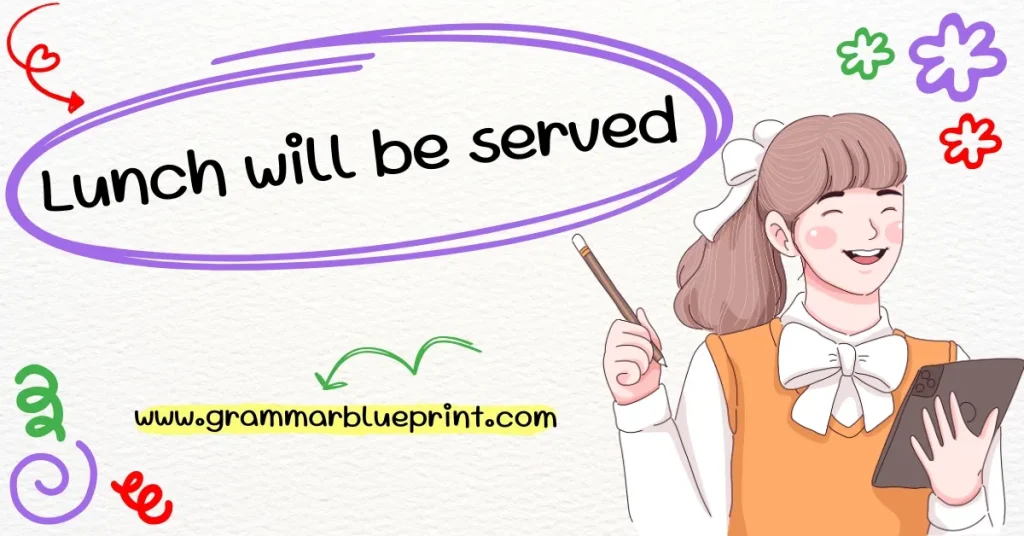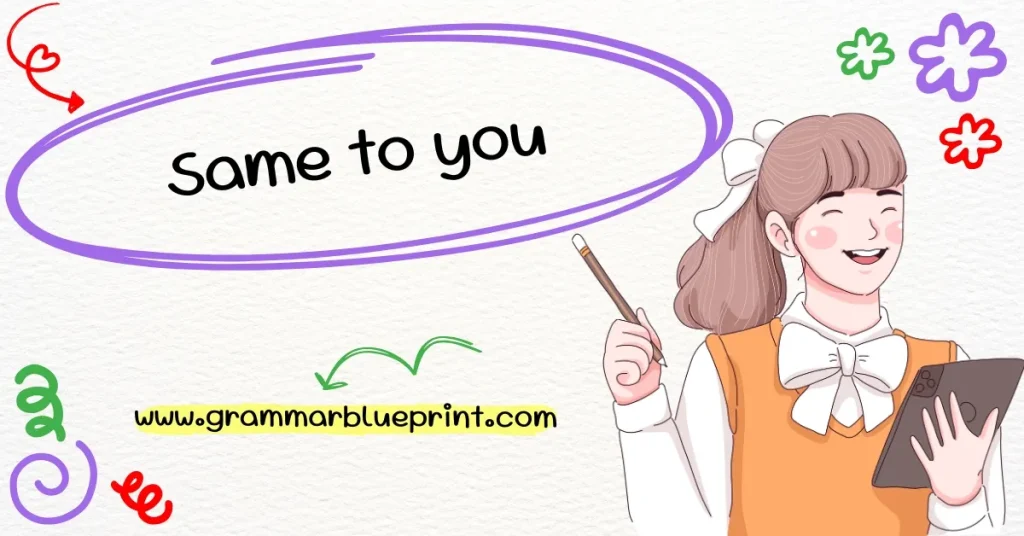When it’s time to eat, one of the most common phrases you’ll hear is, “Lunch will be served.” This phrase is widely used in different contexts, whether it’s at a business meeting, a social gathering, or a casual lunch with friends. Understanding how to use this phrase and its alternatives can greatly improve your communication skills, especially when you are in situations where dining and social interaction are involved. In this guide, we’ll explore various ways to announce lunch, the importance of lunch in different settings, and vocabulary related to meals that will help you sound natural and confident in your conversations.
What Does “Lunch Will Be Served” Mean?
“Lunch will be served” is a straightforward phrase indicating that the lunch meal is ready and will be distributed or made available. It’s commonly used in both formal and informal settings to let people know that food is ready to be eaten. The phrase is often used at events, meetings, or gatherings to announce that lunch is about to begin.
Examples of when it’s used:
- At an Event: “Lunch will be served in the main hall after the meeting.”
- At a Restaurant: “Lunch will be served at noon.”
- In a Social Gathering: “Lunch will be served at the picnic in an hour.”
Understanding the phrase is useful because it can help you announce meals clearly and politely, whether you’re hosting a meeting, planning a party, or simply letting your friends know it’s time to eat.
Better Alternatives to Say “Lunch Will Be Served”
While “Lunch will be served” is a widely understood phrase, there are numerous other ways to announce lunch in both formal and informal settings. Here are some alternatives that may be more appropriate depending on the tone and context:
1. Lunch Is Ready
- Meaning: This is a simple and direct way to announce that lunch is prepared and available.
- Best Use: This is ideal for casual gatherings or informal settings.
- Example: “Hey everyone, lunch is ready!”
- Tone: Informal, friendly
2. Lunch Will Be Provided
- Meaning: A slightly more formal version, often used when lunch is included as part of an event or meeting.
- Best Use: Business meetings or formal events.
- Example: “Lunch will be provided in the conference room after the presentation.”
- Tone: Formal, professional
3. The Meal Is Ready
- Meaning: A neutral way to announce that the meal is prepared.
- Best Use: Suitable for both casual and slightly formal settings.
- Example: “The meal is ready; please come to the table.”
- Tone: Neutral
4. It’s Time for Lunch
- Meaning: A light, casual announcement to let people know it’s lunch time.
- Best Use: Informal settings, such as at home or with friends.
- Example: “Alright, it’s time for lunch!”
- Tone: Casual, friendly
5. Lunch Is On the Table
- Meaning: A direct announcement that lunch is ready and placed on the table.
- Best Use: Informal settings, such as family meals.
- Example: “Lunch is on the table, dig in!”
- Tone: Informal, inviting
6. The Food Is Ready
- Meaning: A simple and clear announcement that the food is ready to be served.
- Best Use: Great for informal situations, especially when you want to encourage people to help themselves.
- Example: “The food is ready. Please help yourselves.”
- Tone: Friendly, encouraging
7. Lunch Is Available
- Meaning: This phrase lets people know that lunch is now available for them to enjoy.
- Best Use: Common in buffets or larger gatherings.
- Example: “Lunch is available; feel free to serve yourself.”
- Tone: Neutral, slightly formal
8. The Spread Is Ready
- Meaning: Refers to a variety of food or a buffet-style meal.
- Best Use: Buffet or catered events.
- Example: “The spread is ready; come and help yourselves.”
- Tone: Casual, enthusiastic
9. The Buffet Is Open
- Meaning: Used when there is a buffet-style meal, indicating the food is ready to be served.
- Best Use: Large events or parties.
- Example: “The buffet is open. Let’s eat!”
- Tone: Casual, welcoming
10. You Can Help Yourself to Lunch
- Meaning: Invites people to serve themselves without any formal announcement.
- Best Use: Informal, casual settings where guests are encouraged to serve themselves.
- Example: “You can help yourself to lunch; everything is set up on the counter.”
- Tone: Relaxed, informal
11. Please Join Us for Lunch
- Meaning: A polite and formal invitation for others to come and enjoy lunch.
- Best Use: Business meetings, formal events, or when you want to sound polite and professional.
- Example: “Please join us for lunch in the dining room.”
- Tone: Formal, inviting
12. It’s Lunchtime
- Meaning: A casual way to announce that it is now time to eat.
- Best Use: Informal settings like family meals or gatherings with friends.
- Example: “It’s lunchtime! Come and eat.”
- Tone: Friendly, informal
13. The Meal Is Ready to Be Enjoyed
- Meaning: A formal way to announce that the meal is prepared and ready to be eaten.
- Best Use: Formal events like banquets or business meetings.
- Example: “The meal is ready to be enjoyed in the dining hall.”
- Tone: Formal, respectful
14. Food Is Ready to Be Served
- Meaning: This is a more formal way to announce that the food is ready.
- Best Use: Business lunches, formal events.
- Example: “The food is ready to be served; please take your seats.”
- Tone: Formal, polite
15. You Can Start Eating Now
- Meaning: A direct announcement indicating that people can begin eating.
- Best Use: Casual settings, especially when the food is ready to eat immediately.
- Example: “You can start eating now, enjoy the meal!”
- Tone: Informal, casual
16. Lunch Is Prepared
- Meaning: This indicates that all the necessary food has been prepared and is ready to be served.
- Best Use: Neutral, appropriate for both informal and semi-formal settings.
- Example: “Lunch is prepared, everyone can sit down.”
- Tone: Neutral, respectful
17. The Table Is Set for Lunch
- Meaning: The table has been arranged with all the necessary items for the meal.
- Best Use: A good way to announce when everything is ready, especially for family meals or formal dinners.
- Example: “The table is set for lunch; come on over!”
- Tone: Formal to neutral, depending on the situation
18. The Meal Has Been Prepared
- Meaning: A polite way to inform guests that the food is ready.
- Best Use: Typically used in more formal or structured settings.
- Example: “The meal has been prepared, please make your way to the dining area.”
- Tone: Formal, polite
19. We’re Ready for Lunch
- Meaning: A simple phrase indicating the meal is ready and waiting.
- Best Use: Informal, family, or friendly settings.
- Example: “We’re ready for lunch, come join us!”
- Tone: Casual, warm
20. Lunch Is Being Served Now
- Meaning: A straightforward announcement that lunch is actively being brought to the table.
- Best Use: Used in settings where lunch is being served to guests (e.g., banquets, catering events).
- Example: “Lunch is being served now. Please come to the buffet table.”
- Tone: Neutral, slightly formal
21. Please Come and Eat
- Meaning: A polite and direct invitation for guests to start eating.
- Best Use: Casual or informal settings, especially when guests are expected to help themselves.
- Example: “Please come and eat, everyone’s waiting for you.”
- Tone: Friendly, informal
22. The Food Has Been Laid Out
- Meaning: The food has been arranged and is ready for guests to start eating.
- Best Use: Often used for buffets or informal meals where guests serve themselves.
- Example: “The food has been laid out, feel free to grab a plate!”
- Tone: Informal, inviting
23. Time to Dig In!
- Meaning: An enthusiastic and informal way to announce that it’s time to start eating.
- Best Use: Casual settings, such as family gatherings or parties.
- Example: “Time to dig in! Let’s enjoy the meal.”
- Tone: Excited, casual
24. Help Yourself to Lunch
- Meaning: Encouraging guests to serve themselves from the food that has been prepared.
- Best Use: Informal settings where there’s a buffet-style meal or a casual spread of food.
- Example: “Help yourself to lunch, everything is ready on the table.”
- Tone: Relaxed, informal
25. Let’s Eat
- Meaning: A direct, often casual phrase indicating that it’s time to start eating.
- Best Use: Informal, family, or close friend settings.
- Example: “Let’s eat! Hope you’re all hungry.”
- Tone: Informal, friendly
26. It’s Time to Eat
- Meaning: A simple announcement that it’s now the time to start the meal.
- Best Use: Informal or semi-formal settings.
- Example: “It’s time to eat, everyone! Come to the table.”
- Tone: Casual, direct
27. The Lunch Is On the Way
- Meaning: This suggests that lunch is almost ready, often used when the meal is in the final stages of preparation.
- Best Use: Informal or semi-formal gatherings.
- Example: “The lunch is on the way! Just a few more minutes.”
- Tone: Informal, anticipatory
28. Come to the Table for Lunch
- Meaning: A polite invitation to direct people to the dining area.
- Best Use: Formal or family settings where people are expected to gather at a dining table.
- Example: “Come to the table for lunch; everything is ready.”
- Tone: Formal, polite
29. Lunch Is About to Begin
- Meaning: A phrase to announce that lunch is starting soon.
- Best Use: Can be used in both formal and informal settings to alert guests that the meal is near.
- Example: “Lunch is about to begin, so please take your seats.”
- Tone: Neutral, polite
30. The Dishes Are Ready
- Meaning: The specific dishes or courses are ready to be served.
- Best Use: Typically used in formal settings or when multiple courses are being served.
- Example: “The dishes are ready; let’s enjoy the meal!”
- Tone: Formal, polite
Types of Lunch Settings
The phrase “Lunch will be served” can be used in various settings, each with its own tone and style of announcement. Understanding the context can help you select the right way to phrase your invitation.
At Work or Business Meetings
In a business setting, lunch is often seen as a way to foster connections and build relationships. Here, the announcement of lunch is typically formal and polite, reflecting the professionalism of the environment. Common phrases include “Lunch will be provided,” “The meal will be served shortly,” or “Please join us for lunch.”
Social Gatherings or Parties
For casual lunches with friends or family, the tone becomes more relaxed. Phrases like “Lunch is ready” or “The food is ready” work well, and invitations to join others are often more informal. This helps to create a welcoming, laid-back atmosphere where people feel comfortable to enjoy their meal.
Restaurants or Cafes
In a dining situation, whether in a restaurant or at a catered event, the announcement might be more formal or neutral. “Lunch is being served” or “Please come to the table for lunch” are common phrases used by staff to invite customers or guests to start their meal.
Vocabulary Related to Serving Lunch
Expanding your lunch-related vocabulary can help you sound more natural when talking about meals. Below are some essential words and phrases to know:
- Buffet: A meal where guests serve themselves from a variety of dishes.
- Set Menu: A menu with a limited selection of dishes, usually at a fixed price.
- A la Carte: A menu where each dish is priced separately.
- Appetizer: A small dish served before the main meal to stimulate the appetite.
- Serving the Meal: Refers to the act of bringing the food to the table or distributing it.
- Help Yourself: A phrase inviting people to take food without waiting to be served.
How to Politely Announce That Lunch Will Be Served
When you need to announce lunch, it’s important to sound polite and considerate. Here are some ways to make a good impression:
Polite Phrases to Use:
- “Lunch is ready; please feel free to help yourself.”
- “Please join us for lunch.”
- “Lunch will be served shortly; thank you for your patience.”
Examples for Different Audiences:
- Formal (business): “Lunch will be provided shortly.”
- Informal (family/friends): “Lunch is on the table, enjoy!”
Why Lunch Is an Important Meal in Social and Work Settings
Lunch is more than just a meal; it serves as a crucial part of social and work life. For many cultures, lunch is an opportunity for people to gather, socialize, and bond. It helps foster relationships in business and personal contexts, making it an essential moment for conversation and networking.
In business settings, lunch provides an informal space for colleagues to connect, discuss ideas, or even solve problems in a more relaxed atmosphere. This makes lunch not just a break, but a valuable tool for team-building.
Tips for Hosting a Lunch Event
Hosting a lunch event requires thoughtful planning. Here are some practical tips:
- Planning the Event: Ensure the venue is appropriate and food is prepared in advance. Timing is crucial, so make sure everything is ready when guests arrive.
- Inclusive Menu: Consider dietary restrictions like vegetarian, gluten-free, or vegan options to make sure everyone feels included.
- Engaging Conversations: During lunch, keep the conversation light, inclusive, and interesting to ensure everyone enjoys their time.
Common Mistakes to Avoid When Announcing Lunch
Sometimes, announcing lunch can go wrong. Here are common mistakes to avoid:
Misleading Phrases:
Ensure that your announcement clearly indicates if the event is formal or informal. For example, “Lunch will be served” might sound too formal for a casual gathering, leading to confusion.
Timing and Delivery:
Announce lunch in a timely manner. Waiting too long or making the announcement too early might leave guests feeling uncertain about when the meal will actually happen.



